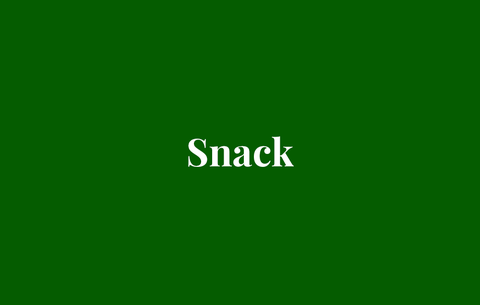Weight Loss Diet Plan for Women Vegetarian
If you're trying to lose weight, there are tons of diets to choose from—and new research points to vegetarian diets as a promising option. For the study, which was published in theJournal of the American College of Nutrition,74 participants cut their normal daily calories by 500 for six months. Some went on a vegetarian diet, and some went on a diabetes-friendly diet (one that focuses on reducing sugars, refined carbs, cholesterol, and saturated fat). People on the vegetarian diet lost more subcutaneous fat (that's the noticeable fat under your skin). They also lost more subfascial fat (the type that lines your muscles) and intramuscular fat (the type stored inside your muscles). That's important, since the fat that's stored inside your muscles and organs can mess with your metabolism, potentially leading to insulin resistance and even type 2 diabetes, says study author Hana Kahleova, M.D.
Related: There Are 6 Types Of Body Fat—Here's What You Need To Know About Them
"Although both groups in our study consumed the same amount of calories, the study shows that calories are not created equal," says Kahleova.
Other studies have shown that eating more plants can help you lose more weight, says Stefanie Mendez, R.D. There are lots of theories as to why this is the case. For one thing, you can eat a much larger volume of veggies than you can high-protein and fatty foods—for the same number of calories. "While a cheeseburger might set you back 500 calories, you'd have to eat a whole lot of beans, veggies, and tofu to get the same amount," says Mendez. "It's more filling because it takes up more space in your stomach." What's more, veggies and grains are the best sources of fiber, which helps prevent blood sugar spikes and drops—keeping you feeling more satisfied so you're less tempted to munch between meals. Vegetarian diets are also lower in saturated fat and cholesterol, which may have an impact on weight loss, Mendez adds.
Ready to go veggie? While you can, of course, go full-on vegetarian, you don't have to eat just greens all day, every day to benefit. "I tell clients you don't have to put a label on your diet," says Mendez. "Even starting with one day with more veggies is a success." Going vegetarian just once or twice a week—i.e., flexitarian—"is really on-trend," she says. Even just that slight shift has lots of other health benefits, including lowering your blood pressure, improving your gut health, and possibly even improving your mood, adds Vandana Sheth, R.D., a lifelong vegetarian, Los Angeles-based dietitian, and spokesperson for the Academy of Nutrition and Dietetics.
(Hit the reset button—and burn fat like crazy with The Body Clock Diet!)
If you're looking to go vegetarian (even if it's just part-time), make sure to get protein at every meal, says Mendez. "It's really important to help your body to repair and to maintain lean muscle mass." And be careful not to take in too many carbs. "The main pitfall with vegetarian diets is you overdo it on the carbs and eat a ton of starchy foods like bread, pizza, and pasta," says Mendez. If your dinner is just pasta with tomato sauce, you're missing the balance (i.e., fats and proteins) you need to stay full—and you end up overeating and/or snacking soon after you're done eating.
Try this sample meal plan if you think a vegetarian diet could be right for you and your weight-loss goals:

Christine Frapech
Mix one serving of carbs, like fruit, whole-grain toast, or whole-grain cereal, with a serving of lean protein, like eggs, low-fat dairy, or a tofu scramble. "The carbs give you energy, while the protein helps you to feel full and meet your needs for day," says Mendez. Here are some specific breakfast ideas:
- 3/4 cup whole-grain cereal and 1 cup unsweetened soy or almond milk (soy has more protein!)
- 1 cup cooked oatmeal, 1 cup berries, and 1 tablespoon nuts or seeds
- Smoothie with 1 cup of fruit plus 1 cup low-fat plain Greek yogurt OR one serving of pea, soy, or hemp protein powder
This simple swap will make your smoothie so much more filling:

Christine Frapech
Divide and conquer: Half of your plate should be a rainbow of non-starchy veggies (like spinach, green beans, cauliflower, carrots, mushrooms, peppers, or eggplant), a quarter should be protein (which is about 1 cup of beans, legumes, tofu, fish, or eggs), and a quarter should be carbs (about 1/2 cup starchy veggies like corn, peas, potatoes, sweet potatoes, or squash; or 1/2 cup grains like quinoa, brown rice, or amaranth). A few options that fit the bill:
- Large green Greek-style salad with 1 cup garbanzo beans, chopped tomatoes, cucumbers, lettuce, 2 tablespoons crumbled feta, 1/4 chopped avocado topped with 2 tablespoons balsamic-olive oil vinaigrette
- 3 ounces grilled smoked tofu or tempeh on a whole-wheat bun topped with sliced zucchini and carrot, lettuce, and 1 tablespoon vegan pesto (made with walnuts, olive oil and kale)
- About 3/4 cups cooked quinoa with lentils, 1/3 avocado, a handful of fresh spinach, 2 tablespoons chopped pecans, 1/8 cup halved grapes, 2 tablespoons diced red onion, and one small segmented clementine
Related: 10 Protein Powders That Will Help You Lose Weight

Christine Frapech
"Definitely be mindful of snacking," says Mendez. "If you're really hungry an hour after a main meal, it could be that your meal wasn't filling enough to meet your needs." Have one to two snacks at the midpoint of the longest stretch between breakfast to lunch or lunch to dinner, and watch your portion size. She suggests pairing a carb and protein, which complement each other and help you to feel satisfied. Some ideas:
- One hard boiled egg and an orange
- 1 1/2 ounces low-fat cheese and 2 tablespoons dried fruit
- 1/2 tablespoon nut butter spread on an apple
- Carrots dipped in 1/4 cup hummus

Christine Frapech
Stick to the same rule you used at lunch: Your plate should be one half veggies, one quarter carbs and one quarter protein. Lots of choices here:
- 1 1/2 cups vegetarian lentil chili (use the kitchen sink of veggies—think butternut squash, red pepper, crushed tomatoes, black or kidney beans, onions, garlic) and one slice of whole-wheat bread or 1/2 cup cooked ancient grains (like quinoa, amaranth, bulgur, or barley)
- 1 cup cooked brown rice topped with 2 cups of tofu-veggie stir-fry (use pan-friendly veggies like chopped cauliflower, broccoli, red pepper, and snow peas; add freshly grated ginger, lemon, chopped onion, and garlic for flavor)
- 1 cup tempeh and black bean taco salad, served on 1 cup of leafy greens, and one whole-wheat tortilla topped with a dollop of salsa and a 2 tablespoons of low-fat Greek yogurt
Colleen de Bellefonds Colleen de Bellefonds is an American freelance journalist living in Paris, France, with her husband and dog, Mochi.
This content is created and maintained by a third party, and imported onto this page to help users provide their email addresses. You may be able to find more information about this and similar content at piano.io
Weight Loss Diet Plan for Women Vegetarian
Source: https://www.womenshealthmag.com/weight-loss/a19958800/vegetarian-weight-loss-meal-plan/